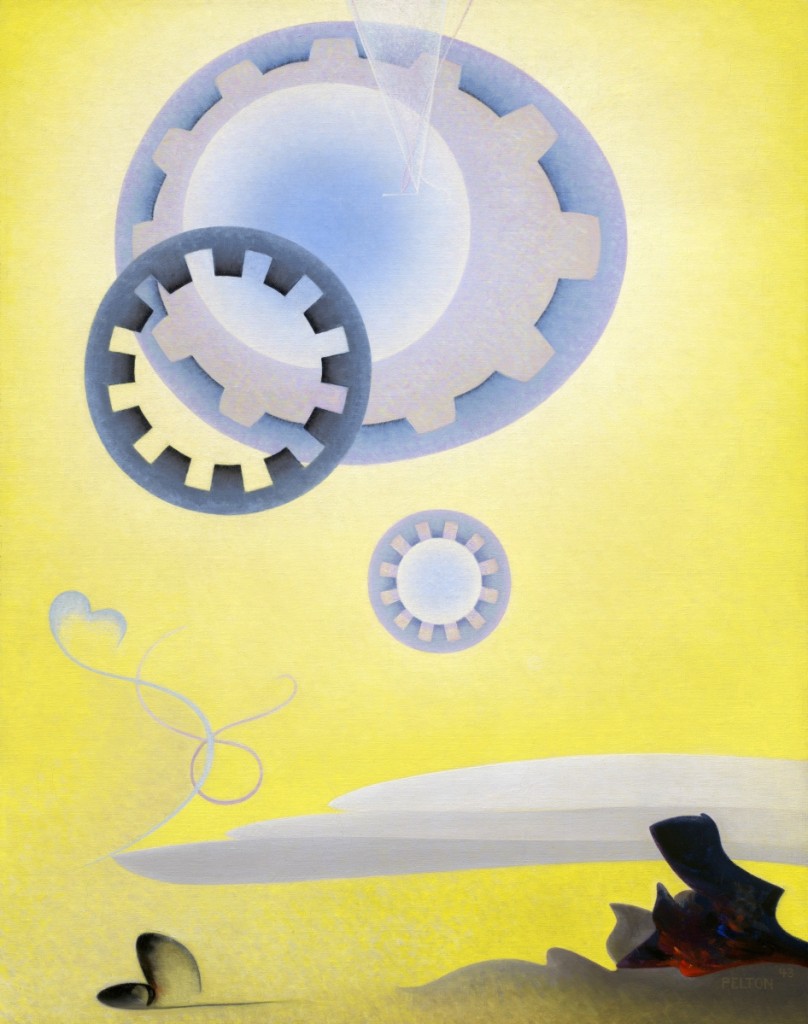
“Prelude” by Agnes Pelton, 1943, oil on canvas. Museum of Fine Arts, Boston; The Hayden Collection – Charles Henry Hayden Fund and Tompkins Collection – Arthur Gordan Tompkins Fund. ©2018 Museum of Fine Arts, Boston.
PHOENIX, ARIZ. – Organized by the Phoenix Art Museum, “Agnes Pelton: Desert Transcendentalist” is the first survey of the obscure American modernist painter in more than 23 years. Although she painted conventional landscapes and portraits, Pelton (1881-1961) is most celebrated for her abstract compositions that reflect her interest in esoteric subjects, including numerology and Agni Yoga with its principal focus on fire as a guiding force. It continues to September 8.
The exhibition of more than 40 works from various private and museum collections, including the permanent collection of the Phoenix Art Museum, sheds light on Pelton’s artistic contributions to American modernism, a movement more commonly associated with artists such as Georgia O’Keeffe (1887-1986) in the Southwest and Marsden Hartley (1877-1943) in New England. Furthermore, Pelton’s interest in spirituality and abstraction links her to a larger international movement that is only now being properly studied and contextualized. “Desert Transcendentalist” represents a fascinating reexamination of an overlooked female artist and her rightful place within the canon of modern and contemporary art history. After its premiere at Phoenix Art Museum, the exhibition will travel to the New Mexico Museum of Art in Santa Fe, the Whitney Museum of American Art in New York City and the Palm Springs Art Museum in California.
Born to American parents in Stuttgart, Germany, Pelton and her family briefly lived in Basel, Switzerland, before returning to the United States in 1888. A graduate of the Pratt Institute in Brooklyn, she exhibited in the Armory Show of 1913, yet her early abstractions didn’t begin until the mid-1920s in New York City.
Intentionally moving away from the mainstream arts community, Pelton eventually settled in Cathedral City, Calif. in 1932. Newspaper journalists sometimes compared her with Georgia O’Keeffe, who was six years her junior, as both artists studied with Arthur Wesley Dow in Massachusetts and both shared an affinity toward the landscapes of the Southwest. Pelton painted conventional desert landscapes and portraits to make a living, but she continued to hone her symbolic abstractions throughout her career. It was her abstract studies of earth and light and biomorphic compositions of delicate veils, shimmering stars and atmospheric horizon lines that would eventually distinguish her body of work. Relatively unknown during her lifetime, Pelton and her work have remained underrepresented within the field of American art until today.
In addition to exploring the artist’s contributions to American Modernism, “Agnes Pelton: Desert Transcendentalist” also examines her practice against a broader, international framework of artists who worked with spiritual and esoteric abstraction, including the occultist Helena Petrovna Blavatsky (1831-1891), Wassily Kandinsky (1866-1944) and Hilma af Klint (1862-1944).
“The story of Agnes Pelton is one that exemplifies the need for our current revisionist model of art history,” said Erika Doss, PhD, professor in the Department of American Studies at the University of Notre Dame. “She was a single woman who didn’t have strong connections to the elite art markets of her time, yet throughout her life, she maintained a commitment to honing her abstract paintings, making a significant contribution to the evolution of American modernist painting.”
The Phoenix Art Museum is at 1625 North Central Avenue. For information, 602-492-3830 or www.phxart.org.











